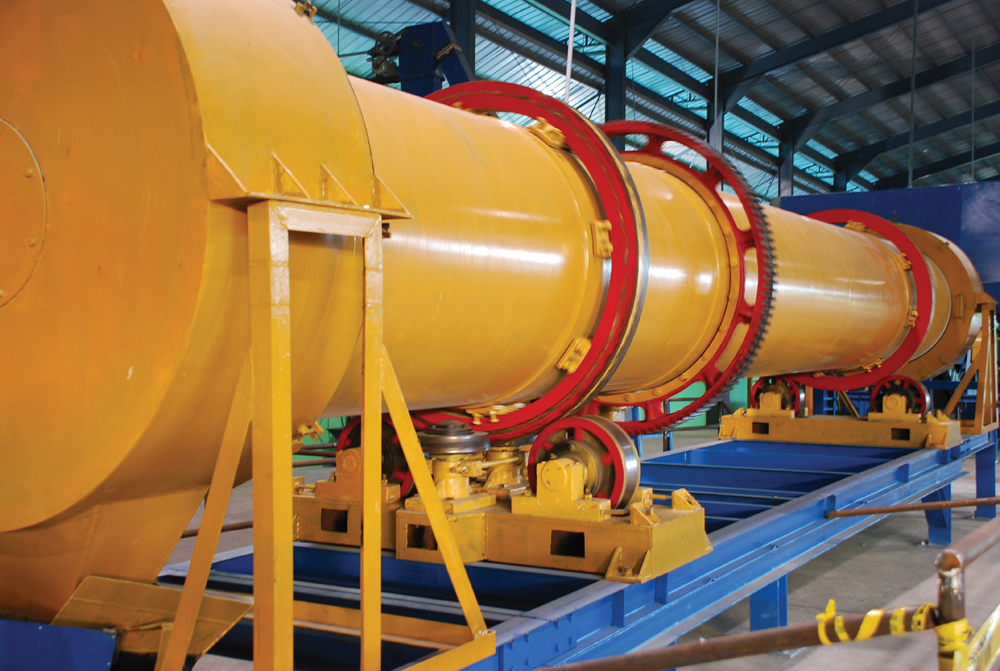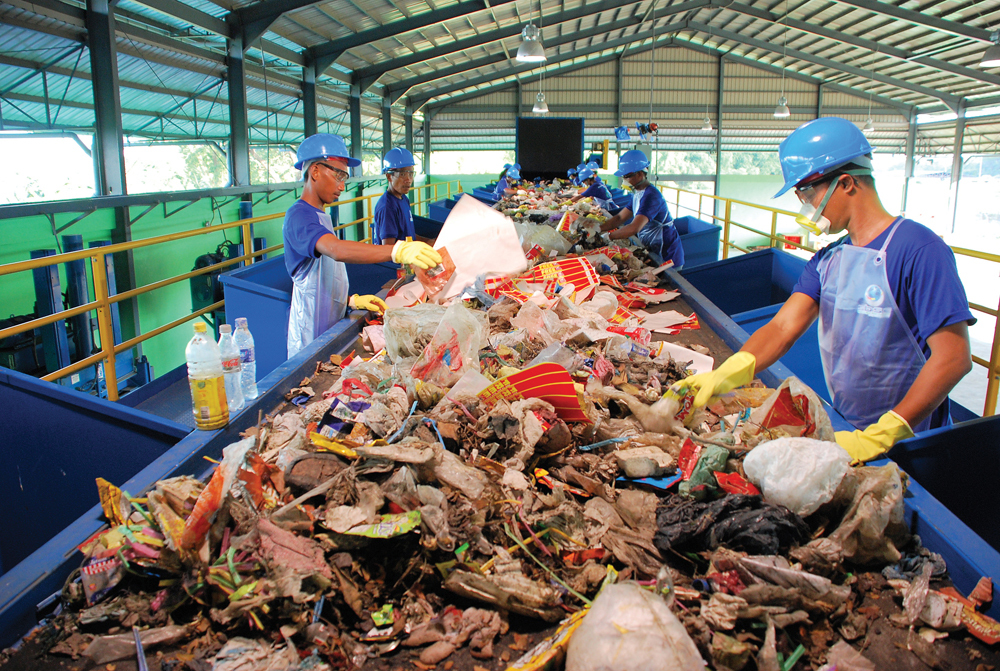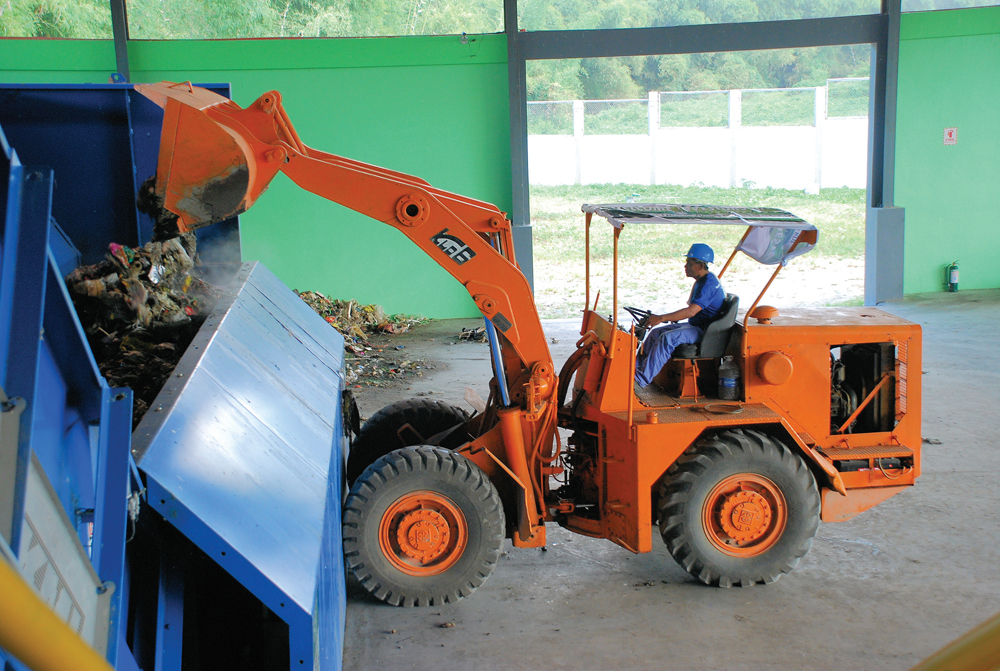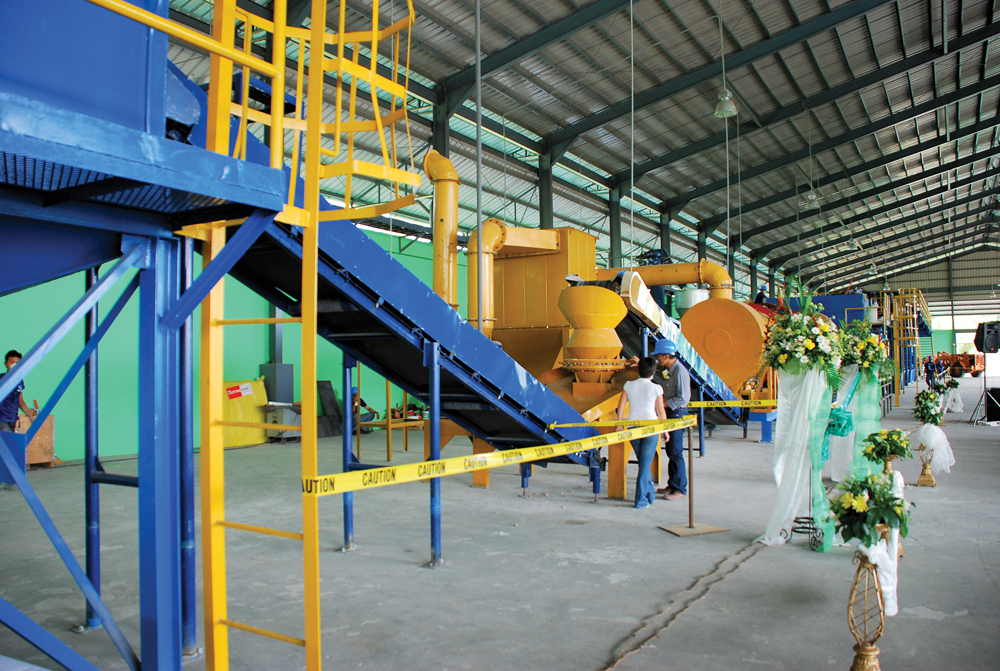Pellets and Power for All













PHOTO: TRUE GREEN ENERGY GROUP
April 5, 2012
BY Lisa Gibson
Cecilia Huapaya has a vision of a clean planet where everyone has access to a good job that affords sturdy housing in a healthy, interlaced community. With the help of several companies and people who share her vision, she is working to make it a reality.
Huapaya is the president of CJ Consortium, a group of 26 companies, including equipment and other product manufacturers, that has helped develop a business model to build homes and produce pellets for gasification and subsequent power generation, as well as bunker oil, carbon black, fertilizer, and pollozonic ash. But these pellets and co-products won’t come from wood or agricultural biomass. They will come from landfills and the municipal solid waste (MSW) that rots there. Whatever isn’t used for those products will be recycled to allow 98 to 99 percent cleanup of pollutant-emitting landfills in the world, according to Lucas Delorraine, vice president of international relations for True Green Energy Group. TGEG recently partnered with CJ Consortium to bring the project model to the Philippines. “Nothing goes to waste,” Delorraine says.
The structure includes the construction of low-cost, energy-saving homes that can be purchased with low-interest mortgages by residents who will be working at the plants. For areas such as the Philippines with overflowing, decomposing landfills and electricity shortages, it could be the all-inclusive answer.
“Our concept is very different from everybody else,” Delorraine says.
Powering the Philippines
TGEG began work on its pellet production and gasification project in San Fernando, Philippines, about five years ago, Delorraine says. Chairman and Founder Ronald Flynn wanted to clean up landfills, while powering off-grid sites. Most areas in the country use oil, but constant power supply is a luxury afforded almost exclusively to larger municipalities. The shortage is particularly clear in the Mindanao grid, where brownouts have been frequent since the beginning of January, according to the Philippines Department of Energy.
“By doing this, we’ll be able to provide better quality of life,” Delorraine says. “Even if the place that we are putting the gasifier doesn’t have enough waste to produce pellets, we can ship the pellets and the gasifier can produce 24/7 electricity for the island.”
The gasification system that will be used for the projects was developed by Beltran Technologies and can use either pellets or shredded MSW. TGEG produces pellets because the mill was already set up when the company chose Beltran's system. The project site in San Fernando is already producing test batches of pellets and is awaiting installation of its gasifier, which should be operational in September.
The process begins with the deposit of garbage into a large bin, where it is sprayed with a disinfecting enzyme and left overnight, Delorraine says. The next morning, the garbage heads to a manual separation line where roughly 50 employees pick out contaminants and recyclables. The remaining material, mostly plastics and organics, is shredded, mixed with limestone, and fed into a dryer that reaches 150 degrees Celsius and continues the limestone mixing step. The high drying temperature and limestone mixing, which traps heavy metals and removes contaminants, are the secret to the innovative project model, Delorraine says. They help produce a material with merely 8 percent moisture that can then be transformed into a squared pellet-type product sized somewhere between traditional pellets and briquettes.
Advertisement
“At this point, we don’t call it MSW anymore,” he says. “It is RDF (refuse-derived fuel). The pellets come out really, really good.” The properties of the resulting densified products are currently being tested, but Delorraine expects they’ll have a calorific value of between 25 and 30 percent. “If the pellets come up with a high calorific value, then we have an almost perfect pellet. Not only can this pellet now be used by us, it can be used by a lot of other industries.”
The San Fernando site will have more pellets than it will need for its gasifier, so the excess will be sold, and numerous companies have expressed interest in purchasing, Delorraine says. Currently, the operation processes 400 metric tons (440 tons) of MSW per day, and the gasifier will require 25 metric tons per day of feedstock. By July, the San Fernando mill will produce 1,000 metric tons of pellets per day.
The syngas from gasifying a product made from garbage can’t be expected to come out clean, but Beltran’s process utilizes a fiber filter, electrostatic precipitator, and a scrubber to convert the dirty, red syngas into a gas that emits a clean blue flame when burned, Delorraine explains. “What you get out is just steam. No pollution at all.” The project, and each identical system installed around the world, will be able to produce 2 megawatt hours of power for local communities.
The Philippines does have emissions regulations, but not as strict as those in other countries. Delorraine isn’t concerned, however, comforted by the fact that a Beltran gasifier in England sits next to a college dormitory. “England is really, really regulated and if it works for England, I believe it will work anywhere.” He adds that the system would pass even U.S. emissions requirements.
The San Fernando operation has made pellets from industrial, residential and separated qualified waste, but for now, most areas employing the system will provide more residential waste than other types.
The idea is a perfect fit for integration with CJ Consortium’s home-building strategy, benefiting both organizations, as well as local communities. “We’re pretty much the answer for them, and they’re pretty much the answer for us,” Delorraine says.
Putting it All Together
“We have made a joint venture with TGEG and we are now looking for a solution to the problem of waste in the world,” Cecilia Huapaya says. Speaking in Spanish with a translator, Al Serrano, executive sales director for CJ Consortium, Huapaya explains how delighted she was when she first met with TGEG’s Ronald Flynn and discovered they shared the same passion for cleaning up waste and simultaneously advancing humanity’s existence. “I was happy to find when I reached the Philippines that Ronald Flynn had the same interest in taking to all the Third World countries the latest technology,” she says. “All countries have huge problems with landfills polluting the Earth.”
Each project site around the world will be located near a landfill and will provide housing for any homeless people who count on them to survive. “These houses will be sold because these people that are living around there, like beggers and peasants, they’re living off the garbage; they’re eating the garbage,” Serrano says, adding that the strategy will modernize those poverty-ridden areas. “They will have a good job, they will have health care and they will have an opportunity to own their own homes, so they’ll be proud.”
Advertisement
Serrano is clear in pointing out that the housing and job creation will bring prosperity for the residents and for the countries they inhabit. CJ Consortium is financing the projects as they develop, with the help of many local governments and banks offering 30- to 40-year mortgages with interest as low as 1 percent. “So these people can afford to have a much better quality of life,” Serrano says. “We’re going to give them work, we’re going to give them education, and we’re going to give them decent housing.”
In addition, the project partners will give a percentage of revenue back to the communities, depending on the amount of revenue each project brings in. Serrano emphasizes that the money can be used to build schools, parks, libraries and fire stations.
For the Future
San Fernando is expected to host the first fully operational integrated project, but negotiations are ongoing with the Philippine city of Manila. “We are going to clean up the Smokey Mountain landfill in Manila,” Delorraine excitedly shares. The enormous landfill causes numerous problems, including for the health of surrounding citizens. “So the government is very interested in our project,” he says.
“Definitely there is potential for waste-to-energy projects,” says Romeo Marcos Galamgam, senior science research specialist in the Philippines DOE Biomass Energy Management Division. “It was pegged that .3 [kilograms] of MSW per person per day is being generated. In Metro Manila alone, it can generate 6,200 metric tons of MSW per day.” He adds that the Philippines’ National Solid Waste Management Commission is pushing waste-to-energy technologies similar to the one developing in San Fernando to address the quickly filling landfills. The San Fernando project has been confirmed by the DOE, but not yet registered, he adds.
And national-level officials and groups aren’t the only ones offering support. “All the local governments in the project areas are joining us in the struggle to maintain a green planet and conserve our resources,” Serrano says.
Outside the Philippines, Huapaya is working on two contracts in Brazil, as well as others in Peru, the Dominican Republic and several countries in Africa. “We have people waiting in line, but we can only go at a certain pace,” Serrano explains, adding that the project model can be implemented anywhere and will soon be employed in the U.S., also. “We intend to start in South Caroline and Virginia.”
Although the pellet production aspect of the San Fernando project is the only one completed and hasn’t been scaled up, excitement among the developers is palpable. “This company, within five years, will have 20 to 25 plants worldwide,” Delorraine says.
“I’ve been in the oil industry a long time,” he adds. “To be quite honest, this is a beautiful project. I’ve never seen anything like it in my life.”
Author: Lisa Gibson
Editor, Pellet Mill Magazine
lgibson@bbiinternational.com
(701) 738-4952
Upcoming Events





